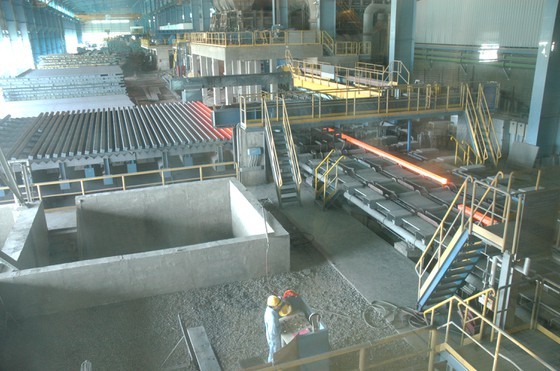
According to the Trade Remedies Authority of Vietnam (TRAV) under the Ministry of Industry and Trade (MoIT), until now, Vietnamese export products have had to face more than 176 trade remedy lawsuits in many countries and territories. Of which, most of them are related to the steel industry, accounting for 80 percent. The rest is in the fields of seafood, plastic packing, and wood.
In the first six months of this year alone, the MoIT has handled 13 trade remedy cases investigated by foreign countries on Vietnamese goods and 6 cases are likely to be investigated shortly.
The representative of the Vietnam Steel Association said that in the structure of export markets, Vietnam's steel exports to the Southeast Asia market accounted for 60 percent of the total exports. The remaining scattered in markets, including Europe, the US, Australia, and the Eurasian Economic Union. However, the door of steel exports is likely to be narrowed when a series of key export markets such as the US, the EU, Australia, some countries in the ASEAN, and the Eurasian Economic Union, simultaneously initiated trade remedy lawsuits on Vietnamese steel products.
Particularly, in December last year, the US Department of Commerce imposed import tariffs of up to 456 percent on some corrosion-resistant and cold-rolled steel products made in Vietnam using materials originated from South Korea and Taiwan.
Or recently, the Australian Anti-Dumping Commission launched two anti-dumping and anti-subsidy investigations on some aluminum-zinc coated steel products manufactured in Vietnam and some other countries. Earlier, after the Comprehensive and Progressive Agreement for Trans-Pacific Partnership (CPTPP) was signed, many steel enterprises promoted steel exports to Canada, causing a sharp increase in the volume of export steel in this market.
Immediately, the Government of Canada conducted a trade remedy investigation on steel exported from Vietnam. According to the preliminary conclusion from the Canadian Border Services Agency (CBSA), Vietnam's corrosion-resistant steel was being dumped at a margin, ranging from 36.3 percent to 91.8 percent, so the corresponding temporary import duties will be applied.
Not only steel, but several other Vietnamese exports, such as automobile body shells, lawnmowers, foam cushions, polyester spun yarn, 6mm thick MDF boards, artificial staple fibers, plywood, and tiles, are also at the risk of being imposed safeguard measures, mainly in the US, South Korea, India, Indonesia, Australia, and Thailand.
Regarding this issue, the TRAV said that to protect domestic export products, the MoIT quickly supported sued enterprises to complete the documents and submit them to the foreign side, at the same time, sent an official dispatch expressing concerns to countries that are investigating trade remedies on Vietnamese export goods.
However, to support enterprises to stabilize production and reduce the risk of narrowing export market by trade barriers, the MoIT has put forward a scheme to build and operate an early warning system on trade remedies to the Government. The representative of the MoIT emphasized that it is very important to detect and participate in the defense against foreign investigating agencies from the initial stage of the investigation, minimizing adverse impacts for export enterprises.
On the other hand, enterprises need to proactively renovate the production process and make transparent the origin of export goods, in which the use of domestically-produced raw materials is considered as a leading safety factor for the export activities of enterprises.
A representative of Ton Hoa Sen Group said that at the end of May and the first half of June this year, the company has finished exporting a shipment of 35,000 tons of galvanized steel sheets to Europe. Up to now, this is the largest consignment of corrugated iron sheets of the group and of Vietnam being exported to the European market. However, to do this, the group had previously researched to innovate technology to improve product quality, upgrade production, and supply activities to deliver quickly and punctually to customers in Europe.
Like Hoa Sen Group, many other steel enterprises, namely Toan Thang Steel Trading Co., Ltd., Dong A Steel Joint Stock Company, and Nam Kim Steel, are improving the quality of products and services, especially maximizing the localization ratio of the source of raw materials for production, meeting the EU export standards sustainably.
According to economic experts, the market movements in the coming time will remain very complicated. Therefore, enterprises and associations must coordinate closely with ministries and departments to actively defend against trade remedy cases. More importantly, it is important to strictly cross control the domestic market movements to timely prevent the situation of tax evasion and the origin fraud from other countries. This is a key factor for enterprises not to be narrowed the export market due to safeguard measures that other countries are applying.
























